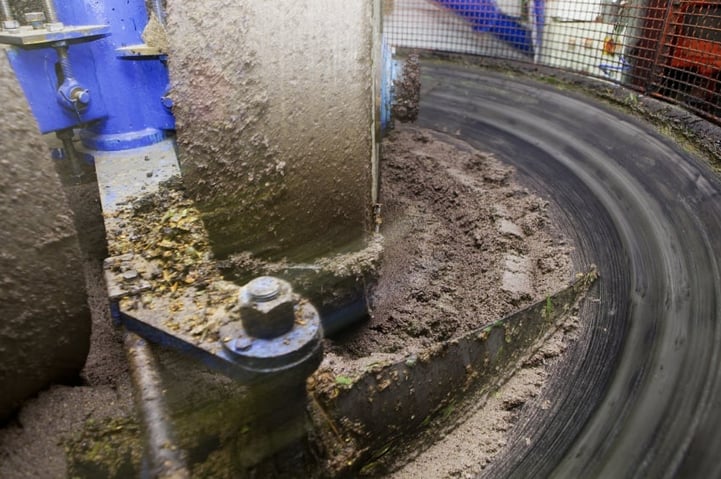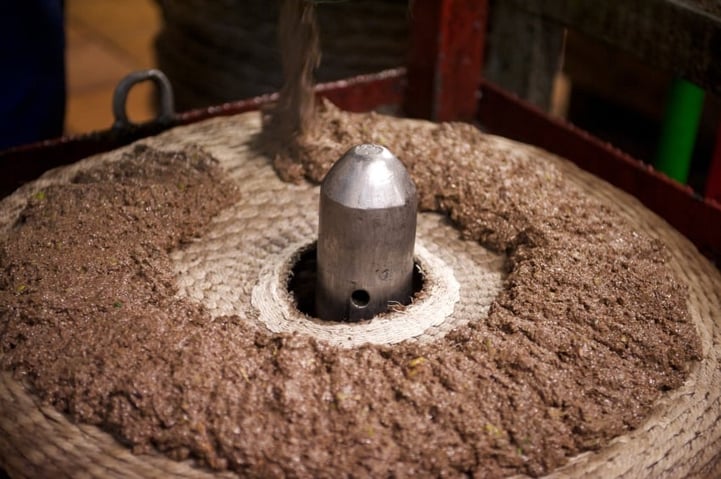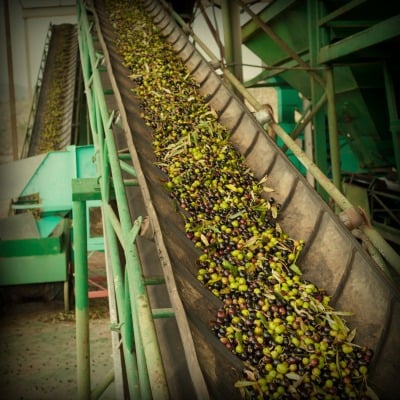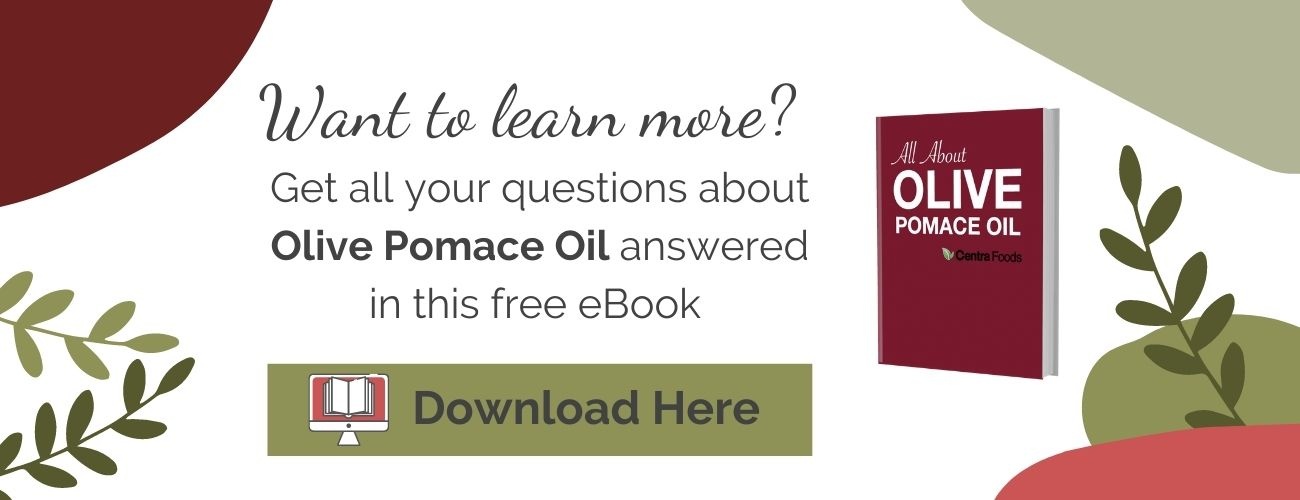What is Olive Pomace Oil really? And how is it different from regular olive oil?
Answering those questions require defining exactly what olive oil is and the process of how it is made. It’s actually easiest to explain exactly what extra virgin olive oil is, then olive oil, then the olive pomace oil. This is because most people don’t know that plain old “olive oil” isn’t just olive oil — it’s actually a refined, lower grade version of EVOO.
My best explanation comes in visual form. Here is a flip-book presentation that I created a few years ago to help explain the differences between each of the grades.
I highly suggest going through this first to get the full picture.
EVOO Comes From Fruit vs. Pomace Comes From Dry Pulp
Another difference between olive pomace oil and EVOO/olive oil is exactly what it is produced from.
Extra Virgin Olive Oil is produced from the fruit of the olive. The entire olive, including the fruit and the pit, is ground into a paste. That paste is typically centrifuged or spun (not pressed, contrary to the marketing term “first cold press”) to get the oil out.


Some of that oil will become “olive oil”: anything deemed virgin (not extra virgin) or lesser is refined using high heat, natural clay and steam to create a light, flavorless oil called refined olive oil. Then a small percentage of EVOO is added back into that, and it becomes the grade known as olive oil, or as seen on the retail shelves, Pure Olive Oil.
Pomace, on the other hand, is produced from the remains of that already spun pulp, that is left over after that Extra Virgin is produced.
EVOO Is Produced With Expeller Pressing vs. Pomace Is Solvent Extracted
 Once as much oil is taken out of the olive paste possible manually, that dry pulp will be “wrung out” in essence, like someone wringing the last of the water out of a damp sponge.
Once as much oil is taken out of the olive paste possible manually, that dry pulp will be “wrung out” in essence, like someone wringing the last of the water out of a damp sponge.
This process is actually done using a solvent called hexane. The hexane is added, which causes the last of the oil to come out of the dry pulp. Then the hexane is removed.
This is how most of the conventional (not expeller pressed) seed oils like canola or soybean oil are produced.
If you’re using olive oil as a bulk ingredient in your food production, you should know that most healthy brands prefer an expeller pressed oil like EVOO, Virgin or Pure Olive Oil. However, the Olive Pomace Oil comes with a substantially lower price tag, and is commonly used in both manufacturing and food service.
Pomace & Olive Oil Are Refined vs. EVOO Is Not
While pomace and regular olive oil are extracted using two different methods (expeller vs. solvent), they are still both refined. This process creates a light taste and color in the oil — it will not have a strong olive flavor. For many brands that need a light flavor and still want to use olive oil, they are drawn to these two grade options.
Extra Virgin Olive Oil, on the other hand, is not refined and maintains its strong natural olive flavor. This taste is typically complementary in recipes like dressings and dinner products. Again though, this grade is often chosen by R&D specifically with the strong flavor in mind. You just have to know what you’re looking for.
My Personal Take On Pomace
Is olive pomace oil the best quality oil? No, absolutely not. No one would claim that it is. But is it the worst? No, absolutely not.
When I’m cooking with olive oil in my home kitchen, I always use an Organic Extra Virgin Olive Oil. However, I also understand the taste profile, heat and price restrictions that are placed on the R&D and purchasing departments of food manufacturing companies. They are two different situations, and not necessarily easily comparable.
But I’d personally much prefer to cook with olive pomace oil that is still made from olives, regarded almost universally as one of the healthiest oils available. In comparison to a conventional corn, canola or soybean oil (your standard vegetable oils) which are also produced using solvent extraction (the primary downfall of pomace), it’s still a better quality oil.
Want to learn more? Check out Olive Pomace Oil: The Ultimate Guide for a deep dive on everything Olive Pomace Oil.
Topics: Olive Pomace Oil













